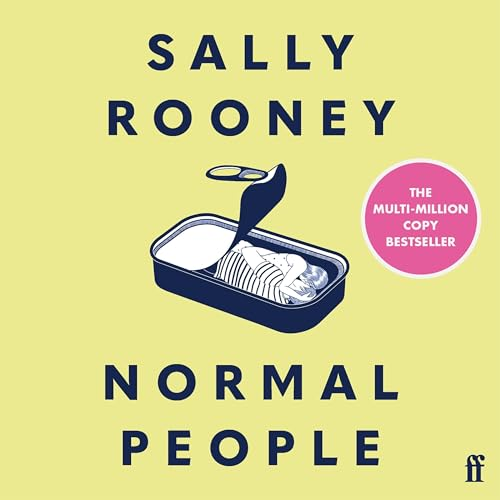The only thing “Normal People” has taught me is that people waste each other’s time way too often.
I am dearly late to Gen-Z’s favorite 2020 BookTok trend: Sally Rooney’s “Normal People,” which defines the social expectations of relationships in the 21st century. Rooney’s marketing team did wonders for this quick read by forwarding it to book influencers on TikTok, effectively skyrocketing sales to more than one million in the United Kingdom. Additionally, this novel received the British Book Award for Book of the Year in 2019. Shortly after, the book was adapted into an Emmy-nominated limited series on Hulu in 2020 starring Daisy Edgar Jones and Paul Mescal. So, it must be good for its highly acclaimed praise, right?
No. Most of the book lovers I have spoken to have said that it was the most frustrating experience to read through. This only made me more than curious to scope out this so-called “boring but wretched slow burn” that I continue to see on social media.
The novel itself is quite short – only 264 pages – but Rooney takes readers through four very long years of main characters Marianne and Connell’s relationship. Starting in January 2011 in County Sligo, Ireland, Connell waits for his mother who works as a house cleaner in Marianne’s family mansion.
He and Marianne attend school together but live completely different lives. It’s one of those right-person, wrong-time tropes – but without the happy ending.
Marianne is quiet, politically thoughtful and smart but tiringly lonely and bullied by her peers. Connell is on the football team, which means he’s popular and surrounded by girls despite not having expressed interest in any of them. After secondary school, they both attend Trinity College Dublin, and their roles reverse. Marianne is popular, pretty and socially adept while Connell struggles to find his place for the first time. They continue to intertwine in and out of each other’s lives, starting an on-and-off relationship.
After reading the first page, I expected the book to rest on my desk for the next two months as I remain studying in London.
Here’s something crucial to note before reading Rooney’s detailed observational storytelling: she does not use quotation marks when characters speak. Rather, the reader needs to pay careful attention to the short dialogue that’s back-and-forth but pages long. Somehow, this subconsciously forces readers to notice the subtle characteristics and tone of each character. At first, this was painstaking and frustrating to read, and I found Marianne and Connell’s relationship to be awful.
Even in college, when Connell was at his lowest, Marianne still loved and admired him from afar. Somehow, they called themselves friends throughout the entire book, but they were physically intimate many times, confessed they were in love with each other (at different times and unrequited, of course) and continued to date other people for four years straight. It is simply frustrating and doesn’t make sense at times, but so many of us find ourselves in this exact predicament because we are too scared to say how we feel.
The last chapter, “Seven Months Later (February 2015),” shows Marianne bringing Connell coffee in bed and taking a shower in his ensuite bathroom. We are led to believe that they are officially dating because she has her own “chest of drawers” in his bedroom.
However, their passively jealous and non-trusting dynamic proves how dysfunctional of a pair they are despite finally being in a relationship. Marianne still distrusts Connell with other girls, and he still hides his ambitions from Marianne, showing that he doesn’t feel comfortable enough to be himself around her. Reluctantly, he tells Marianne that he was accepted into the MFA program at a university in New York that another girl, whom Marianne is jealous of, encouraged Connell to apply to.
She tells him to go but knows that he probably won’t come back to her unchanged. She knows that they will never have what they used to have.
And just like that, Marianne and Connell’s four-year-long story ends with the two presumably parting ways once again. This book is an antagonizing slow burn. Based on the rants of a trustworthy friend about this book, I expected myself to dislike it as well, but I found myself with this book on my mind even when I wasn’t reading it.
Marianne and Connell’s relationship sparked a realization in me: normal people don’t have years-on-end “situationships” while being secretly in love with each other at different times. As much as I wanted them together, I realized that was just for my satisfaction as a reader who had invested my time reading this gem.
Marianne is the smart loner who is in love with the athletic popular jock, so I naturally rooted for their success. Their relationship reflects how “situationships” are more normalized than ever before and almost always leave each person in misery.
Reading this and watching the limited series was relentlessly frustrating. I wanted to scream “Just be honest with each other!” but they never were until it was too late.
Through it all, they were always more than friends but not brave enough to admit their feelings and enjoy the limited time that they had together. It was an endless rope of bad timing and loud thoughts.
And for normal people, that certainly happens too often.








